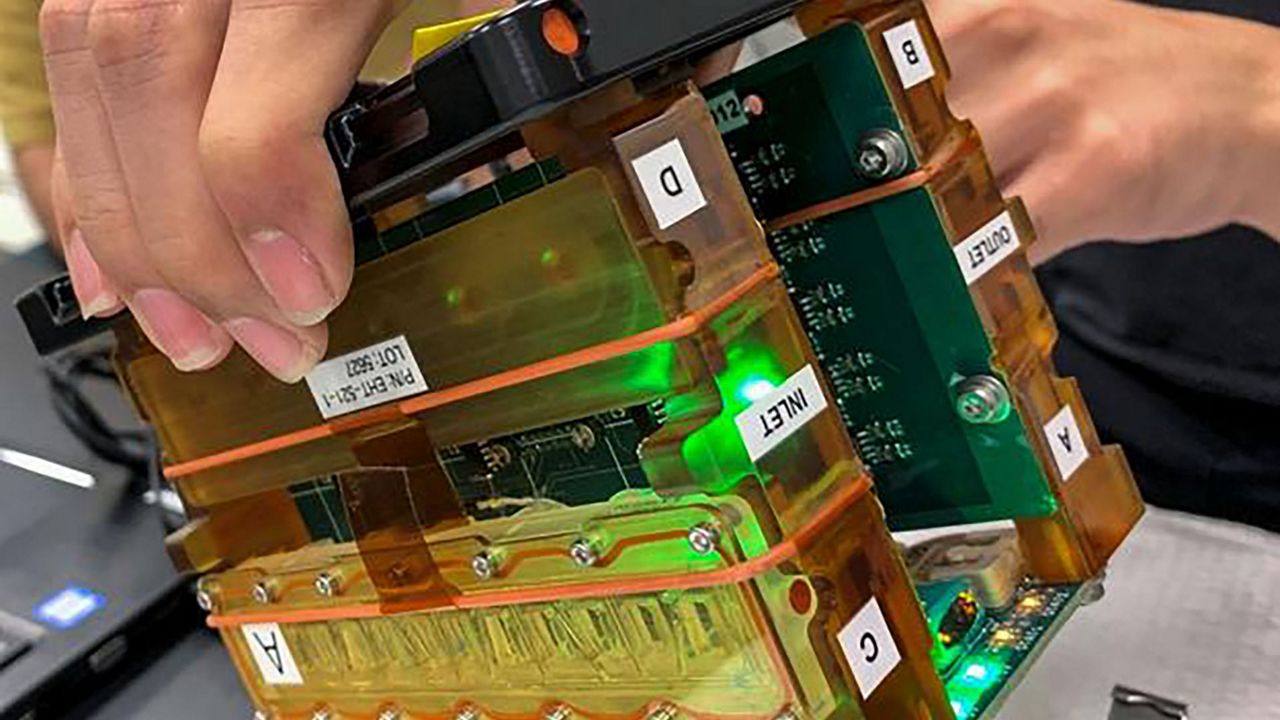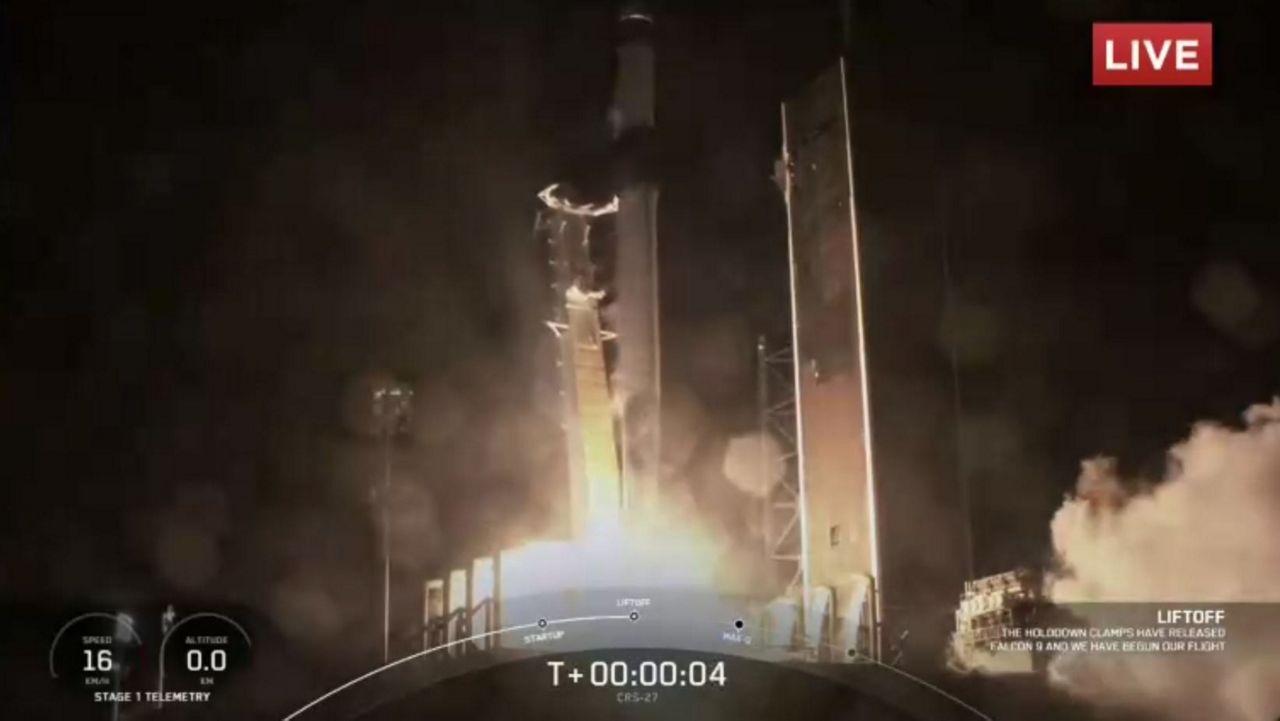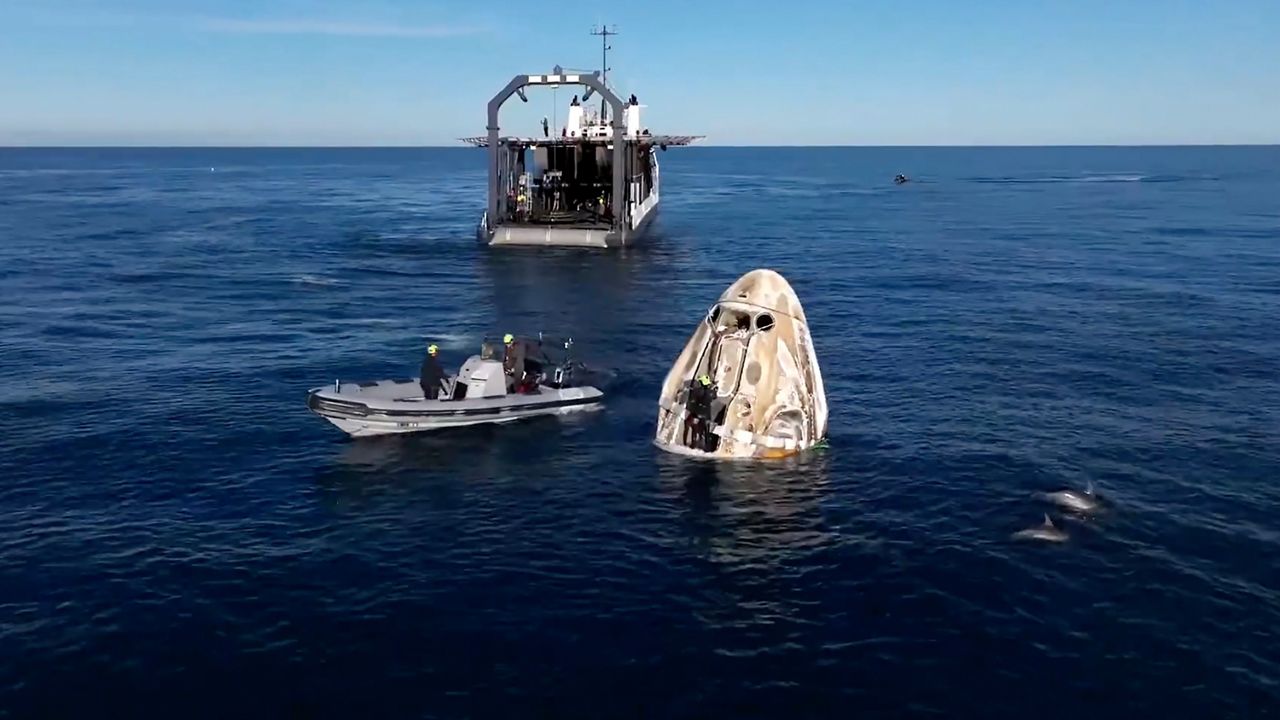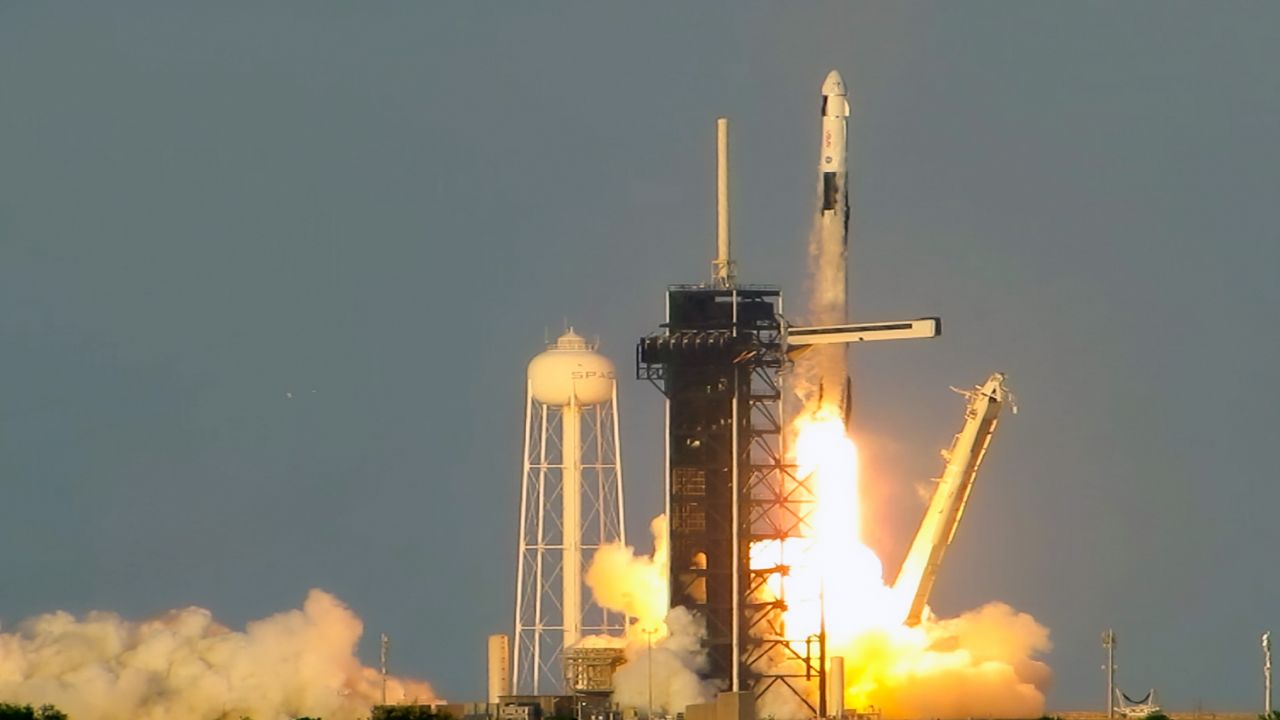KENNEDY SPACE CENTER — With supplies and experiments onboard, SpaceX launched its Dragon spacecraft to the International Space Station on Tuesday night.
What You Need To Know
- Various experiments will be sent up, like Cardinal Heart 2.0 and HUNCH Ball Clamp Monopod
- 🔻Scroll down to watch the launch🔻
Liftoff! pic.twitter.com/vK0FOQTkbU
— SpaceX (@SpaceX) March 15, 2023
The Falcon 9 rocket took off from Launch Complex 39A at the Kennedy Space Center at the instantaneous launch window of 8:30 p.m. EDT, sending Commercial Resupply Service mission 27 (CRS-27) to the International Space Station.
The Dragon capsule is expected to dock at the orbiting laboratory at around 7:52 a.m. EDT, Thursday, March 16, both NASA and SpaceX confirmed.
For this launch, the first-stage booster, B1073, has some impressive missions under its belt:
- SES-22
- HAKUTO-R Mission 1
- Amazonas Nexus
- 3 Starlink launches
After the stage separation, the Falcon 9 rocket landed on the droneship A Shortfall of Gravitas that is stationed in the Atlantic Ocean.
Falcon 9’s first stage has landed on the A Shortfall of Gravitas droneship pic.twitter.com/IKVtXDPaIy
— SpaceX (@SpaceX) March 15, 2023
On Tuesday morning, the 45th Weather Squadron gave an 80% chance of good lift-off weather, with the primary concern being the thick cloud layer rule.
The day before, the agency gave a 50% chance of good (or bad) launch weather.
“This will pose a Thick Cloud Layer Rule concern for the primary launch window Tuesday evening,” the 45th Weather Squadron stated on Monday.
However, the weather conditions improved.
If there was a scrub, the next chance to launch would have been at 8:08 p.m., EDT, Wednesday, March 15.

Understanding the mission
In addition to food, equipment and other supplies, the Dragon capsule is also carrying out various experiments.
Some of these experiments include sending back up 3D-cultured cardiac muscle tissues to help create new therapies for cardiac dysfunction back on Earth, stated NASA.
“These organoids are used in the Cardinal Heart 2.0 investigation to test whether clinically approved drugs reduce microgravity-induced changes in heart cell function,” NASA described the Cardinal Heart 2.0 experiment.
Another experiment, this one designed by high school students, will help keep cameras steady while tracking targets on the ground or from inside the ISS.
The HUNCH Ball Clamp Monopod will be attached to the handrails of the ISS during the experiment, stated NASA.
Research from Japan Aerospace Exploration Agency (JAXA) called Tanpopo-5 will look at how radiation-resistant microbes like moss spores and biochemical compounds like amino acids respond to space exposure.
“Amino acids have been detected in extraterrestrial bodies such as meteorites and are possible precursors to life on Earth. Tanpopo-5 follows four earlier experiments seeking insight into how organisms respond to space exposure,” NASA described.








